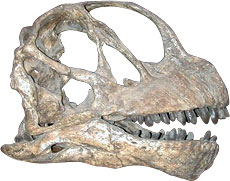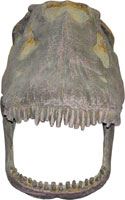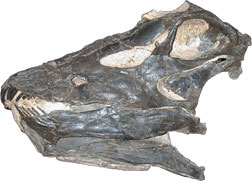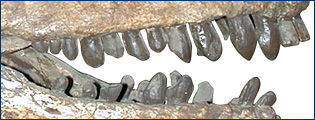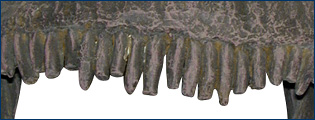 |
|
Sauropod communities in the Upper Jurassic of North America include four or five sauropods that co-existed, all feeding on the various plants of the time. The most common of these animals were Diplodocus and Camarasaurus. The immense size of sauropods presents an interesting ecological problem: how did the sauropods share food resources? If several species had to compete for the same food resource, it is likely that one or more would have gone extinct in the territory that the sauropods shared. The obvious place to look for clues is in the mouths of these animals.
The dentitions of sauropod dinosaurs include two basic tooth types; a robust, spatulate tooth form, exhibited by Camarasaurus (see skull at lower left), and a gracile, peg-like tooth form, seen in Diplodocus (see skull below right). Based on these dentitions, it has been inferred that Diplodocus ate soft, aquatic vegetation, or that its teeth were used for nipping or raking the fronds of terrestrial vegetation, while Camarasaurus ate tougher vegetation.
Experimental work on the microscopic wear patterns on the teeth of modern mammals has provided insights into the diets of extinct animals, including sauropods. Examination of the teeth of Diplodocus and Camarasaurus reveals two basic patterns of wear: a coarsely scratched and pitted surface, and a finely scratched surface. The coarser pattern is present on Camarasaurus teeth, although finer scratches also occur. The fine scratch pattern is on the teeth of Diplodocus and in some cases the teeth of Camarasaurus.
